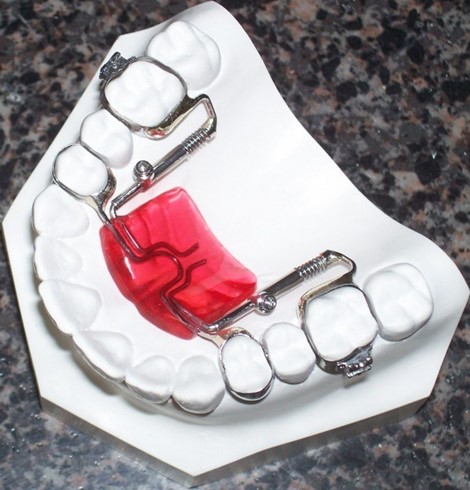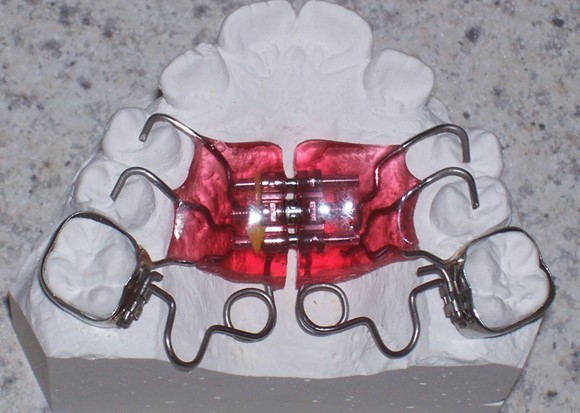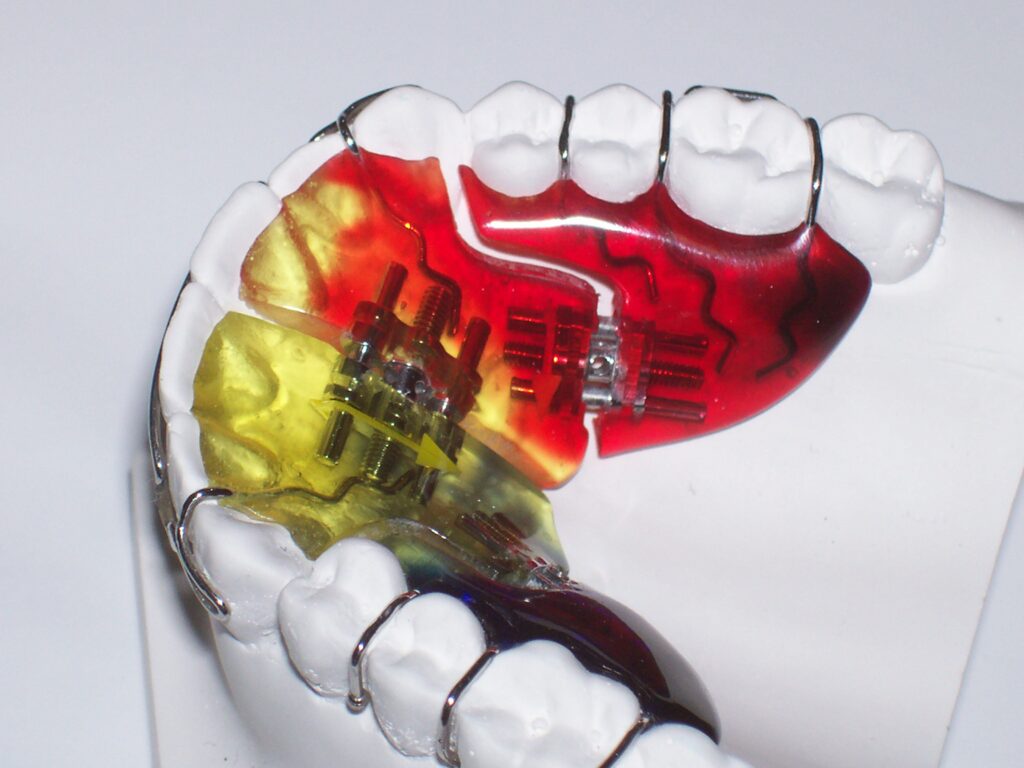Molar distalization is a fundamental orthodontic technique utilized to create space within the dental arch and establish a harmonious molar relationship, often classified as a Class I occlusion. These appliances can be employed on one side of the arch (unilaterally) or both sides simultaneously (bilaterally), offering flexibility in treatment planning. Each side of the appliance is meticulously adjustable, allowing for precise control of tooth movement. Moreover, some designs integrate mid-line expansion screws to address transverse discrepancies in conjunction with sagittal movement.
Detailed Overview of Specific Appliances:
Distal Jet Appliance
The Distal Jet is a fixed appliance typically anchored to bands placed on the first bicuspids, which serve as the primary support. A substantial Nance button, positioned against the palate, provides critical stabilization and prevents unwanted anterior movement of the anchorage teeth. Activation is achieved through open coil Nickel Titanium (NiTi) springs, which deliver a consistent, light, and continuous force to the molars. This constant force is crucial for predictable and efficient tooth movement. The appliance incorporates a rod and tube mechanism that guides the molars distally in a controlled manner, minimizing the risk of undesirable tipping or rotations. This design ensures that the force is applied in the direction of the intended movement. For cases requiring simultaneous expansion, an expansion screw can be incorporated into the acrylic Nance button. This dual functionality allows the Distal Jet to address both sagittal and transverse discrepancies concurrently.

Pendulum Appliance Family
The Pendulum family comprises a series of fixed appliances designed for molar distalization, each offering unique characteristics. The core design involves a Nance button anchored to the premolars, utilizing bondable rests to distribute forces. Titanium Molybdenum Alloy (TMA) springs are the active components that deliver the distalizing force to the molars. These springs engage into lingual sheaths attached to the molar bands, facilitating easy removal and adjustment during treatment. This accessibility is crucial for making necessary modifications and activations.
- Pendulum Appliance: The basic Pendulum appliance consists of the stabilizing Nance button with bondable rests on the premolars and the TMA springs for distalization. It is effective for straightforward molar distalization cases.
- Pendex Appliance: The Pendex is an enhanced version of the Pendulum that incorporates a mid-line expansion screw within the Nance button. This addition allows for simultaneous arch expansion during molar distalization, making it suitable for cases with transverse deficiencies.
- T-Rex Appliance: The T-Rex further refines the Pendex by adding stabilizing wires soldered from the acrylic Nance button directly to the molar bands. This modification enables sequential movement. The mid-line expansion can be activated first, addressing the transverse dimension, and then the stabilizing wires can be cut, freeing the molars to move independently distally. This sequential approach optimizes the treatment outcome by addressing individual components in a specific order.

Sagittal Appliance
For situations where a removable distalizing appliance is preferred, the Sagittal appliance provides an effective option. These appliances are particularly useful for regaining lost arch length in either the anterior or posterior segments of the dental arch. Retention is achieved using Adams clasps, which engage on the first bicuspids and first molars, ensuring a secure and stable fit. Maxillary Sagittal appliances typically incorporate twin expansion screws placed mesial to the first molars. To facilitate expansion, the appliance is divided into three distinct sections. This segmentation allows for controlled and differential expansion as needed. In contrast, mandibular Sagittal appliances position the expansion screws in the cuspid/bicuspid region. Additional features may include springs designed to reposition the canines as space becomes available, further enhancing the treatment outcome. Moreover, posterior acrylic coverage may be incorporated to reduce or eliminate occlusal contact between the maxillary and mandibular teeth, minimizing interference during treatment. This acrylic coverage helps prevent undesirable tooth movements and ensures that the distalization proceeds smoothly.

